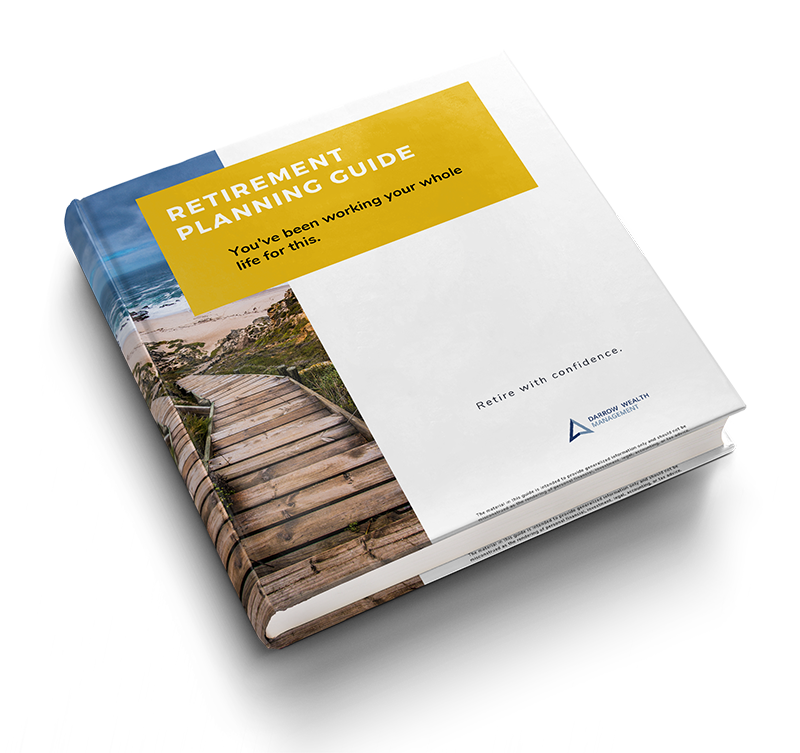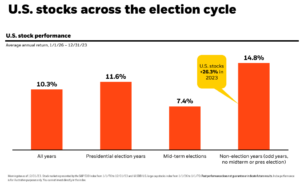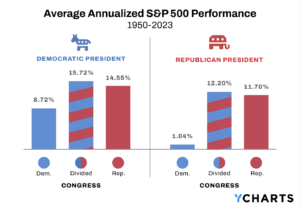Updated for 2023. Planning can help optimize annual required minimum distributions depending on your goals and cash flow needs. After the passing of Secure Act 2.0, RMD age increases to 73 for taxpayers born in 1951 – 1959, increasing to age 75 for those born in 1960 or later. Taxpayers already subject to distributions at age 70 1/2 or 72 must continue to take withdrawals. But retirees who don’t need the money often have questions. For example, what’s the best time of year to take required minimum distributions, how to reinvest it, or if you can avoid paying tax on RMDs.
Here are some of the most common RMD questions and planning opportunities for investors. And while there isn’t just one best way for everyone to take required minimum distributions, there’s probably one way that works best for you. At least this year.
What’s the best time of year to take your required minimum distribution? Lump sum or monthly?
All else equal, (though it rarely is), it’s often best to stay invested as long as possible to prolong tax-deferred growth. Of course, this assumes several key factors: the market is going up, you don’t need the money, and there aren’t any tax savings in considering alternate approaches (more on this later). Trying to market time your RMD on a daily basis is sure to be met with mixed results.
To illustrate: between 1980 and 2021, the S&P 500 closed a daily trading session with a positive price return only 54% of the time. But over a full year, the S&P 500 ended the year with a positive price return over 75% of the time.
Given that statistic, retirees without cash flow needs could benefit, on average over the long run, from staying invested and taking withdrawals closer to year end.
If you need the money from your retirement accounts to meet cash flow needs, there’s less room for optimization. Taking RMDs monthly, quarterly, or semi-annually is possible, though you’ll want to consider trading costs relative to the size of the distribution. Further, if you’re not working with a financial advisor, consider your appetite for frequent trading.
How to take RMDs and avoid any taxes (legally of course)
Retirees can donate all, or a portion of, their required minimum distribution directly to charity to legally avoid paying tax on the gifted amount. It’s called a qualified charitable distribution (QCD). You can make QCDs starting at age 70 1/2. The maximum gift is $100,000/year per taxpayer, regardless of the RMD amount. Usually, to benefit from charitable giving, taxpayers need to itemize their tax deductions. But with a qualified charitable distribution, the money is simply excluded from your taxable income for the year, similar to a 401(k) contribution.
Like any tax planning strategy involving charitable giving, you must be charitably inclined for it to make sense.
Starting in 2024, the $100,000/year limit will be indexed with inflation. Further, a one-time $50,000 gift from an IRA to various split-interest entities, such as a charitable remainder unitrust, will be permitted.
Can you reinvest your required minimum distribution?
Yes, you can reinvest your RMD. There are a couple ways to do it. The easiest way is often selling investments in a retirement account and transferring cash to a taxable brokerage account. Investors typically wish to do some tax withholding at this stage and move the net amount, but if you have enough cash set aside already it isn’t necessary.
Another method which tends to works best for large required minimum distributions is transfer shares in-kind from your retirement account to a brokerage account. Particularly in a down market, this approach can be beneficial for investors who don’t need the money right now.
Some shares can be sold for tax withholding if necessary. This method may require some paperwork depending on the financial institution. Also, as markets move daily, the actual value of the investments transferred may be higher or lower than your RMD. The latter requiring an additional transfer or distribution.
Although you cannot reinvest your RMD directly in an IRA or a Roth IRA, if you have earned income for the year, you may still be able to contribute to one of these accounts.
Should you delay distributions from retirement accounts as long as possible?
To simplify, RMD age is often referred to as beginning the year you turn 72 or 73. But technically, the required beginning date is April 1st of the year after turning 73 to take the first distribution. If you defer, you’ll need to take two required minimum distributions the year you turn 74. Again, if you turned 72 in 2022, you’re still on the hook to start distributions.
For example, if you turn 73 in 2024, your 2024 RMD will be calculated using your retirement account balance on 12/31/2023, divided by the Life Expectancy Factor from the IRS Uniform Lifetime Table. Your 2025 required distribution is based on your account balance from 12/31/2024. If you don’t take the minimum distribution in 2024, you’ll have to take both in 2025.
In most cases, delaying distributions this way isn’t beneficial. For starters, the surge in taxable income at age 74 can put you in a much higher tax bracket and also increase Medicare Part B premiums. Further, it could be a wasted opportunity if you were in lower tax brackets in prior years.
For these reasons, it sometimes makes sense to consider starting RMDs at 73 or even beforehand. For example, taking advantage of low tax brackets by doing a series of Roth conversions before RMDs begin or simply paying tax at low rates to avoid the dreaded tax cliff.
However, there are instances where deferring distributions as long as possible is advantageous. Consider a business owner selling a business at retirement or individual experiencing another type of windfall. If you’re in the highest marginal tax bracket one year but not the next, there’s a potential planning opportunity.
Retirement income planning
There are many factors that go into retirement income planning. Unfortunately, most of the best planning opportunities occur before RMD age. The best approach can also change every year. For example, even when markets are down, it won’t change your required withdrawals for the current year. However, it’s likely your mandatory distribution the next year will be lower. Perhaps this meets your cash flow needs, but perhaps not. In either case, it’s a new year to try and optimize your required minimum distributions.
Article written by Darrow Advisor Kristin McKenna, CFP® and originally appeared on Forbes.










